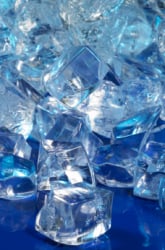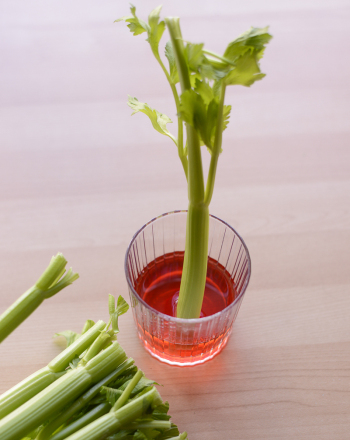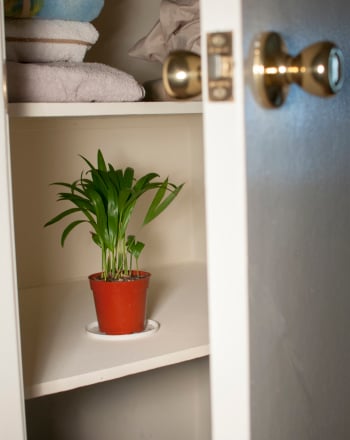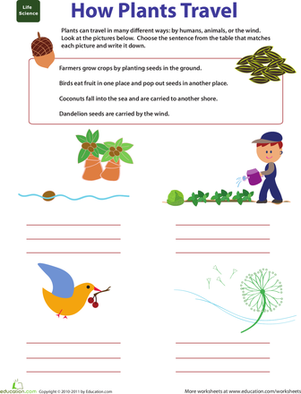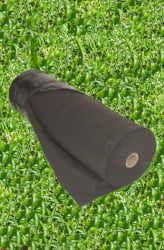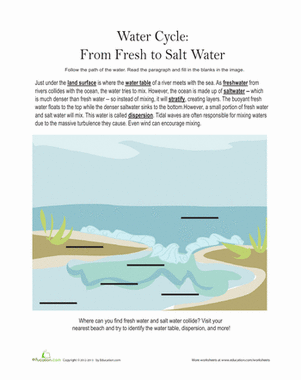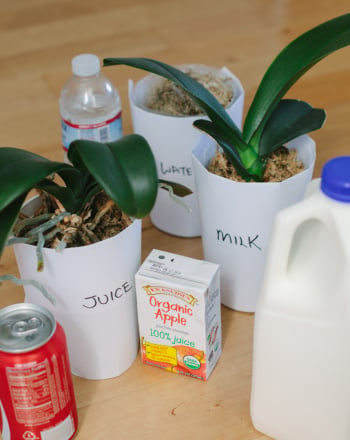Science project
How do Plants Absorb Water?
Difficulty Level
Easy
Cost
Minimal
Safety Issues
- Adult supervision recommended when searching the internet.
- Watch for allergies.
Project Time Frame
2-4 weeks
Objective
This project uses a basic coloring technique that shows how plants drink water.
Project Goals
- To demonstrate how plants drink water.
- To discover the effects of certain substances on certain flowering plants.
- To create a beautiful, colorful floral display.
Materials and Equipment
- Computer with internet access
- Color printer
- Digital camera
- Assorted fresh-cut flowers (should be white)
- Several small clear glasses (or clear plastic cups)
- Small, sharp kitchen knife
- Food coloring (and other coloring substances – see below)
- Typical office/craft supplies (such as paper, pens & poster-board)
Introduction
Plants have a way of drawing water and other nutrients upward from below, in seeming defiance of the basic laws of gravity. This process is called transpiration. This experiment examines the process of transpiration, with charmingly decorative results.
Research Questions
- How do plants drink water?
- How fast do water and nutrients travel throughout the plant?
- What are the effects of different substances in the plant water?
- What are some advantageous uses for these effects?
Terms and Concepts to Start Background Research
- Transpiration
- Molecules
- Photosynthesis
Experimental Procedure
- Research related materials (see bibliography below)
- Select at least two different types of white flowers (several specimens of each type).
- Do image searches online, and print out photos of the flowers you’ve selected.
- Obtain a dozen (or more) freshly cut white flowers with stems at least 6 inches long.
- Put a small amount of fresh water in each cup (about 3 tablespoons)
- Photograph the flowers in the cups.
- Add one brightly pigmented substance to each cup. You could try food coloring (20-30 drops), beet juice, grape juice, iodine, ink… Use your imagination.
- Carefully label each cup.
- Take one fresh (unused) white flower and split the center of the stem lengthwise, starting at about halfway up the stem, and cutting all the way down.
- Place two clean cups next to each other, with a small amount of fresh water in each one.
- Add 20-30 drops of blue food dye to one cup, and 20-30 drops of red food dye to the other cup.
- Place one part of the split stem in one cup, and the other part in the other cup.
- Examine and photograph all specimen(s) over the next 24-48 hours, adding a little water if needed.
- Preserve your specimens by drying them (optional).
- Interpret your results in a detailed report.
- Show results visually using photos taken throughout the course of the experiment.
- Include beautiful fresh or dried flower arrangements in your science fair display.
Bibliography
Wiki topic: “Flowers”
Disclaimer and Safety Precautions
Education.com provides the Science Fair Project Ideas for informational purposes only. Education.com does not make any guarantee or representation regarding the Science Fair Project Ideas and is not responsible or liable for any loss or damage, directly or indirectly, caused by your use of such information. By accessing the Science Fair Project Ideas, you waive and renounce any claims against Education.com that arise thereof. In addition, your access to Education.com's website and Science Fair Project Ideas is covered by Education.com's Privacy Policy and site Terms of Use, which include limitations on Education.com's liability.
Warning is hereby given that not all Project Ideas are appropriate for all individuals or in all circumstances. Implementation of any Science Project Idea should be undertaken only in appropriate settings and with appropriate parental or other supervision. Reading and following the safety precautions of all materials used in a project is the sole responsibility of each individual. For further information, consult your state's handbook of Science Safety.
Education.com provides the Science Fair Project Ideas for informational purposes only. Education.com does not make any guarantee or representation regarding the Science Fair Project Ideas and is not responsible or liable for any loss or damage, directly or indirectly, caused by your use of such information. By accessing the Science Fair Project Ideas, you waive and renounce any claims against Education.com that arise thereof. In addition, your access to Education.com's website and Science Fair Project Ideas is covered by Education.com's Privacy Policy and site Terms of Use, which include limitations on Education.com's liability.
Warning is hereby given that not all Project Ideas are appropriate for all individuals or in all circumstances. Implementation of any Science Project Idea should be undertaken only in appropriate settings and with appropriate parental or other supervision. Reading and following the safety precautions of all materials used in a project is the sole responsibility of each individual. For further information, consult your state's handbook of Science Safety.



